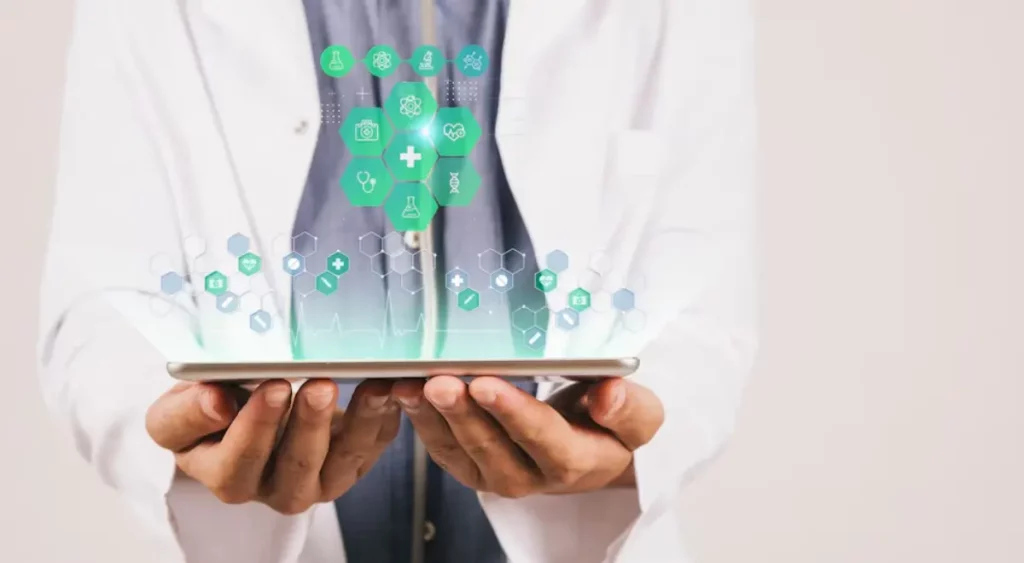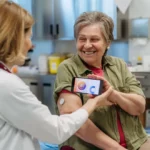Why Digital Health Platforms Are the Cornerstone of Smart Healthcare?

Smart healthcare depends on connected systems. Digital health platforms bring together patient data, monitoring devices, and AI tools in one place, helping providers improve outcomes, cut costs, and deliver more personalized care.
As we continue our journey in this digital age and the era of advanced technology, horizons reveal new options. This advancement has touched every sphere and healthcare is no exception since traditional treatment methods are now digitalized. Smart Healthcare has emerged which is the amalgamation of the latest generation of technology with best practices. The global remote patient monitoring size is expected to reach $207.5 billion by the end of 2028. RPM advancement has revolutionized the traditional healthcare techniques allowing healthcare providers to deliver personalized treatment to the patients.
Table of Contents
ToggleSmart Healthcare with Remote Patient Monitoring Solutions
Remote Patient Monitoring harnesses digital technologies to gather information from patients in remote locations. It then securely transfers this information to the healthcare professionals for analysis and diagnosis. This is an incredibly smart approach that has seen outsized gains in patient care and revenues. The tedious task of monitoring patients has now turned hassle-free, accessible, and efficient.
- From Patient’s Perspective: The utilization of technology-oriented devices helps in monitoring vitals, anywhere, anytime. With this, patients seek medical assistance via virtual assistants and have access to remote healthcare.
- From Provider’s Perspective: The devices which are connected to a digital platform, provider’s can remotely monitor patients anytime, anywhere. With built in communcation modes like HIPAA compliant SMS, audio/ video calls, patient-provider communication is enhanced. Clinicians can use analytics features to gauge abnormalities or variations in the health data for prompt and timely interventions with remote monitoring solutions.
Characteristics of RPM as a Smart Healthcare Solution
The best RPM solutions should have the below-mentioned characteristics:
- HIPAA compliance
- Easy-to-use devices that are accessible by the patients.
- Frequent gathering of information from those devices and then integrating them remotely with the least latency.
- Immediate notifications to the care providers during emergencies.
- Unified communication solutions to provide end-to-end communication.
- Booking appointment and scheduling meetings with the provider either physically or virtually.
- Interoperability solutions for seamless flow of patient records into EHRs.
Revolutionizing Healthcare with RPM Solutions
- Access to Specialized Support: By gaining access to knowledge and resources from a reliable digital health platform, care providers can implement RPM in minimal time & expect it to work seamlessly.
- Enhanced Scalability: Based on the demand of RPM whether it increases or decreases, the health clinics can flawlessly adjust the services. Program expansion is dependent on the volume of patients without interrupting the regular processes.
- Access to Advanced Technology: Providers can leverage stellar technology to deliver exceptional services that are patient-centric. Access to the latest tools, the ones that align with the existing systems while providing functionality for proficient remote monitoring.
- Quality Assurance: High-quality reports are generated as per the agreement with the providers to give them a crystal clear picture of the efficacy of the services.
- Focus on Core Competencies: Seamless backend workflow allows health clinics to focus on delivering personalized treatments for patients instead of struggling with administrative processes.
- Competitive Advantage: The implementation of remote patient monitoring solutions sets healthcare providers apart from their peers. Since patients are seeking advanced solutions for their overall well-being, the RPM system offers personalized care to them. With this, providers can gain new patients and retain the existing ones. This is done by promising their commitment to smart healthcare solutions and advanced practices.
- Expanded Service Offerings: When healthcare providers incorporate RPM solutions, it expands their service offerings. They can efficiently manage chronic diseases thereby attracting a broader patient population. This further addresses the current demand for advanced healthcare solutions leading to a boost in patient engagement and revenue.
- Data-Driven Insights: RPM generates detailed patient data for multiple individuals. When analyzed carefully, it is utilized to enhance care protocols and decision making. Healthcare professionals can also identify the latest trends and create personalized treatment plans. This data-driven approach leads to better clinical outcomes resulting in , effective treatment, and patient satisfaction.
Implementing Remote Patient Monitoring in Your Practice
- Choose a Trustworthy RPM Solution: Today, you have an array of options available at your disposal. So you have to choose the best integrated monitoring software that aligns with your existing system and delivers the functionalities you need for hassle-free monitoring.
- Empowering Staff with Important RPM Competencies: The RPM platform represents a revolution in healthcare technology. Healthcare providers have to implement techniques to adapt to this wave. A good solution will provide you with thorough training and support to make sure the professionals become knowledgeable and confident in monitoring their patients.
- Clear Protocols for RPM Usage: A reliable RPM system establishes clear protocols outlining the process of information collection, immediate notifications, and flawless communication with patients. This bridges the gap between patients and healthcare providers.
- Navigation of Regulatory Requirements: Compliance with HIPAA and state regulatory laws is mandatory for every RPM solution. Healthcare organizations should be cognizant of these requirements in order to safeguard data and protect patient privacy.
- Create Patient Awareness: The success of integrated monitoring software lies in the patient’s understanding of how to use monitoring devices efficiently. This can only be done when the care staff is educated and provides clear instructions on how to utilize RPM solutions.
- Assessing the Effectiveness: Once implemented, it is important to analyze and assess the effectiveness of the overall system. Frequently analyze the solution and its overall impact on the patient’s outcome and engagement. You can make necessary adjustments to improve performance.
Transform Healthcare with HealthArc’s RPM Solutions
RPM is transforming healthcare by delivering proactive patient-centric personalized care management. With our tools and services, healthcare providers can continuously monitor patients’ vitals and treat chronic diseases like heart problems, obesity, diabetes, blood pressure, etc. This further results in enhanced patient outcomes. We, at HealthArc, offer risk-free revenue-generating solutions that improve care coordination and minimize healthcare costs.
Key Takeaways
- Digital health platforms are the backbone of smart healthcare.
- They enable RPM, CCM, and AI-driven care in one system.
- Providers save time, reduce costs, and unlock new revenue.
- Patients gain better engagement and outcomes.
- HealthArc delivers a complete, scalable solution for modern practices.
Frequently Asked Questions (FAQs)
It is one ecosystem, which combines patient data, devices to monitor it, clinical workflows, and analytics. Rather than having to use multiple tools, providers can use one interface.
Digital health solutions are allowing care to be more connected. They reduce redundancies in activities, manage inter-provider/patient communication more, and make decisions more quickly and based on data.
Patients will have increased access to care, medication reminders, remote chronic care management, and prompt warnings in the event of changes to health metrics. This is translated to enhanced health results and tranquility.
EHR capability, RPM and CCM module integration, AI-derived insights, HIPAA compliance, billing automation, and patient-centered self-reporting are crucial.
Yes. With these practices, practitioners not only save time on administrative tasks but also meet compliance and achieve new revenue through reimbursable programs, such as RPM and CCM. Long-term, it minimizes the number of trips to hospitals and the expenses.
HealthArc makes adoption easy by providing turnkey devices, a platform with AI, compliance support, and dedicated staff support—simplifying digital health success for clinics.
Most Recent Blogs
Categories
Related Blog
- September 13, 2024 | Read Time: 10 mins
How To Choose the Best Care Management Software
Want to implement care management software into your practice? With the healthcare...
Learn More- March 28, 2024 | Read Time: 4 mins
Improve Clinical Workflows With Virtual Care Management Programs
Virtual Care Management programs, particularly Remote Patient Monitoring (RPM) and Chronic Care...
Learn More- November 11, 2022 | Read Time: 3 mins
Seven Ways To Take Care Of Patients Remotely With Digital Health Software
In the healthcare sector, technologies are evolving rapidly. Care professionals now have...
Learn More


